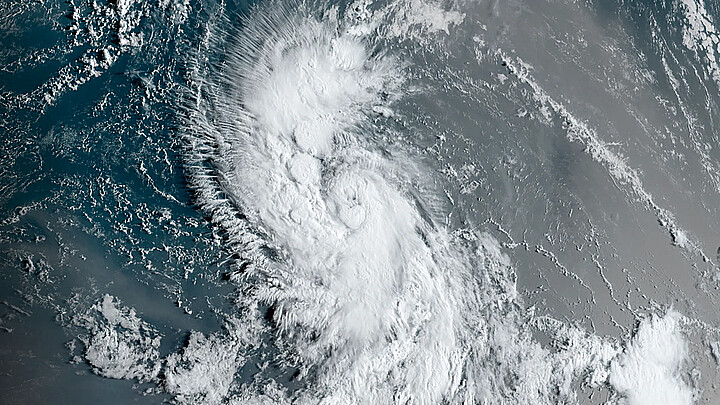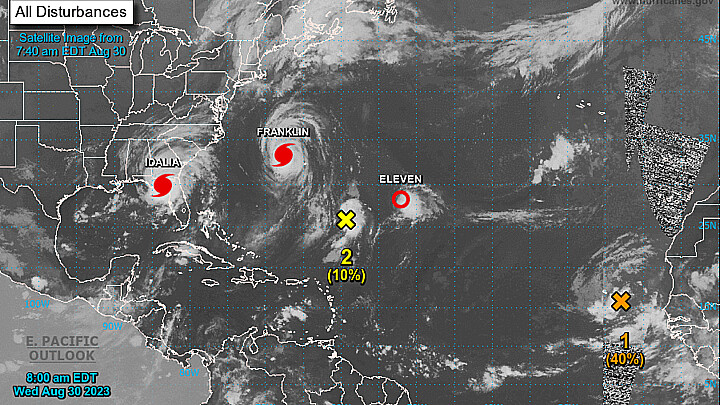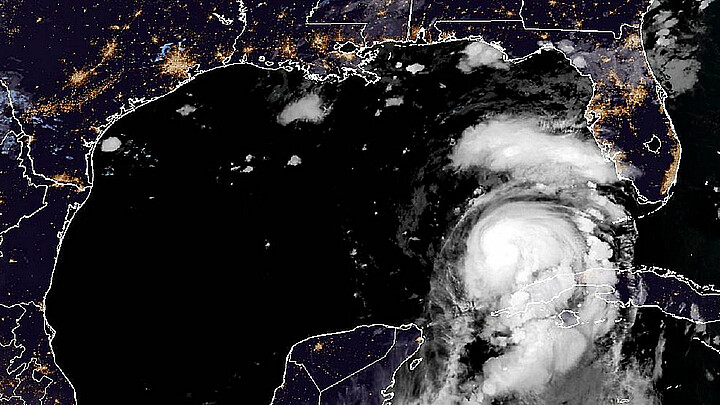Climate
Hurricane Milton strikes Florida west coast as Category 3 storm, leaves three million without power
The much feared Category 3 storm reached winds of 120 mph at landfall, but its power weakened to Category 1 as it drifted across the Sunshine State

October 10, 2024 9:22am
Updated: October 10, 2024 9:27am
Hurricane Milton made contact with Florida’s west coast Wednesday night as a “dangerous Category 3” system near Siesta Key, a Sarasota based barrier reef island on Florida's central west coast, according to reports from the National Hurricane Center.
The much feared Category 3 storm reached winds of 120 mph at landfall, but its power weakened to Category 1 as it drifted across the Sunshine State.
The storm, one of the largest in recent history, was originally as powerful as a Category 5 with winds exceeding 180 mph on Monday, but the hurricane’s sustained wind speeds eventually decreased just as the storm reached Florida’s southwest coastline.
Meteorologists and weather forecasters originally predicted Milton would be a “catastrophic” Category 5 storm by the time it made landfall, and there were widespread fears the system would completely destroy the Tampa and Fort Meyers metropolitan areas with an unprecedented surge of 13 feet of rising water.
Fears of the storm led to the closure of Tampa International Airport, nearby ports and even led to the removal of animals from the Tampa Zoo.
Fortunately, the storm diminished in strength to a Category 3.
Florida’s west coast was battered with high winds and rains, but it evaded a deadly surge. After losing the speed it picked up from the Gulf’s warm waters, Milton slowed even more to a Category 1 and headed to Florida’s Space Coast, taking aim at the Kennedy Space Center in Titusville, ultimately heading out to the Atlantic where it is expected to diminish into a tropical storm.
As a result of the high winds and torrential downpours, an estimated 3.2 million customers were left without electricity early Thursday, according to utility tracker PowerOutage.us.
St. Petersburg and Tampa residents were repeatedly warned by local, state and even federal officials to leave the area before the storm approached, and then told for those remaining to take shelter as “extremely dangerous hurricane-force winds" tackled the region.
Wednesday marked a bizarre and shocking surprise of dozens of twisters that broke out throughout the state from the west to east coast and even in the Everglades.
Tornadoes erupted along Florida’s east coast before Milton made landfall on the west coast, with twisters arising in South Florida municipalities such as Boca Raton and Weston while the National Weather Service in Miami documented at least four twisters, including a “multi-vortex tornado.”
The surprising twisters on the east coast came just as storm surges started to rise along Florida’s west coast.
As Milton crossed Florida, authorities issued storm surge warnings from northward to Altamaha Sound in Georgia, and a tropical storm warning from Daytona Beach to Edisto Beach in South Carolina.
Meteorologists at the National Hurricane Center predicted that up to 18 inches of heavy rainfall will continue to drench the Florida peninsula through Thursday, creating risks for “catastrophic and life-threatening flash and urban flooding, along with moderate to major river flooding.”
Florida Gov. Ron DeSantis continuously warned Florida residents to be cautious, predicting on Wednesday that, “There will be fatalities. I don't think there's any way around that when you have 10 feet of storm surge. There are going to be people who stay behind, and they're going to be in distress.”
Florida officials issued emergency orders over the weekend for 51 counties and have since set up 149 shelters across the state for up to 200,000 people.
Many Floridians fled the west coast for the east coast and will have to eventually make their way back across the Sunshine State. That may prove challenging however since as of Wednesday morning, more than 23% of Florida gas stations were without fuel, according to GasBuddy.
Milton's peak speeds made it one of the most powerful Atlantic hurricanes in history even though it only started out as a tropical storm and evolved into a Category 5 hurricane within 24 hours.
Hurricane Milton comes a little more than two weeks after Hurricane Helene pounded Florida’s west coast on Sept. 24. The storm has been described as a devastating tropical cyclone that reached sustained winds of 140 mph and left a wake of destruction in its path.










